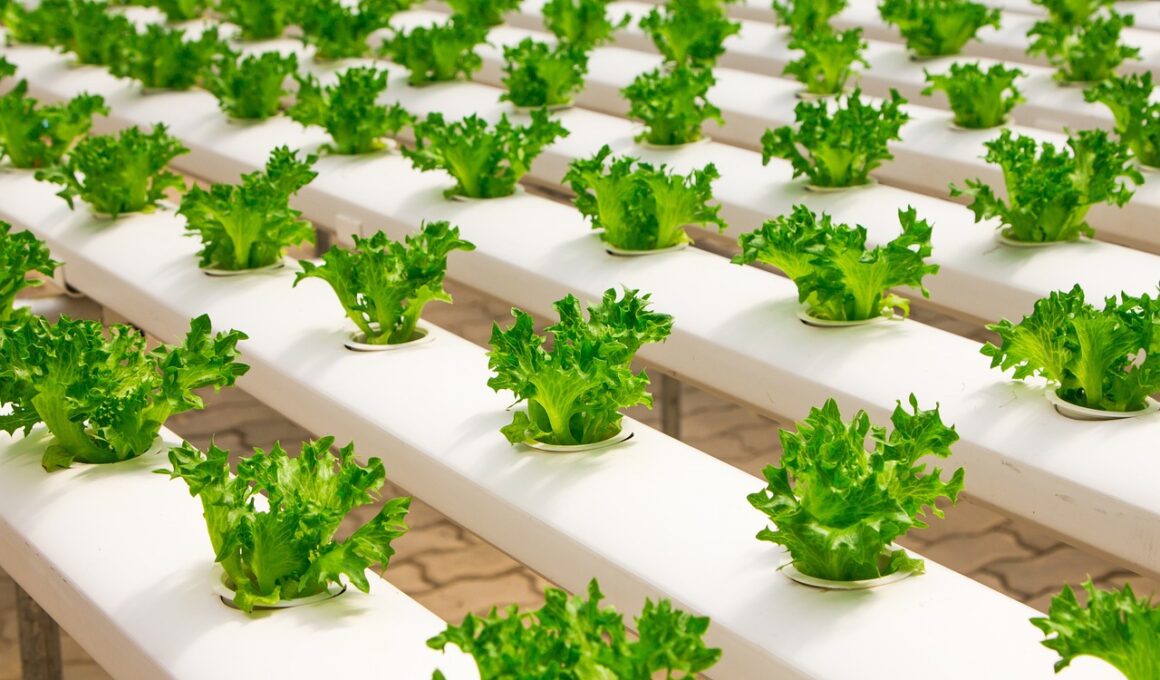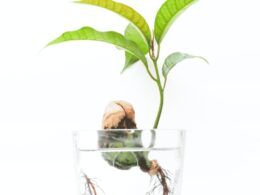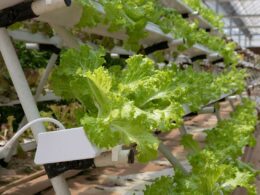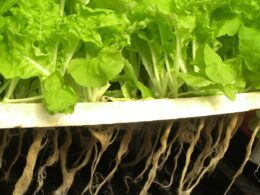Are you interested in growing your own tomatoes but don’t have a lot of outdoor space? Hydroponic tomato growing might be the solution for you.
Hydroponics is a method of growing plants without soil, using nutrient-rich water instead. It’s a great way to grow tomatoes indoors, in a controlled environment, and can yield a bountiful harvest in a relatively short amount of time.
But how long does it take for hydroponic tomatoes to grow?
Tomatoes typically take about 8 to 12 weeks to grow hydroponically from seed to harvest. However, the exact time can vary depending on various factors such as tomato variety, growing conditions, nutrient levels, and temperature.
Some faster-growing tomato varieties can be ready for harvest in as little as 6 to 8 weeks, while others may take longer, up to 14 weeks. It’s important to follow specific guidelines for the tomato variety you’re growing and monitor the plants closely for optimal growth and maturity.
In this article, we’ll explore these factors in more detail and give you tips on how to optimize your hydroponic tomato growing experience for a successful harvest.
Understanding Hydroponic Tomato Growth
Growing tomatoes hydroponically requires knowing the ideal growing conditions and techniques. Hydroponic growing involves growing plants in a nutrient-rich water solution without soil. This method is gaining popularity due to its numerous benefits for tomato growth.
One significant benefit of hydroponic tomato growth is that it allows for controlled environmental conditions. You can adjust the temperature, humidity, and light levels to create the best growing environment for your tomatoes. You can also add the right nutrients to the water solution to ensure your plants have everything they need to grow healthily.
Another benefit of hydroponic tomato growth is that it allows you to grow tomatoes all year round. You can set up your hydroponic system indoors, which means you are not limited to the outdoor growing season. With the right setup and care, you can have a continuous supply of fresh, juicy tomatoes, regardless of the time of year.
Choosing the Right Tomato Variety
When choosing the right tomato variety for your hydroponic system, it’s important to consider factors such as growth rate, yield, and flavor profile. One of the biggest advantages of hydroponic gardening is that soil alternatives can be used. This means that you can choose a tomato variety that is not traditionally suited for your local soil conditions but still grows well in your hydroponic system.
Additionally, hydroponic gardening allows for more control over pest control, which is a crucial factor when choosing a tomato variety.
When it comes to choosing a tomato variety for your hydroponic system, there are a few options to consider. One popular choice is the cherry tomato variety, which is known for its fast growth rate and high yield. Another option is the beefsteak tomato, which is larger in size and has a longer growing season. It’s important to choose a variety that is well-suited for your hydroponic system and meets your personal preferences.
Overall, choosing the right tomato variety for your hydroponic system is key to a successful harvest. With the ability to use soil alternatives and control pests, hydroponic gardening offers a unique advantage when it comes to growing tomatoes. Consider your growing conditions, taste preferences, and desired yield when choosing the perfect tomato variety for your hydroponic system.
Optimizing Temperature and Light
Let’s talk about how to get the most out of your tomato plants with the right temperature and lighting setup! One of the most important things to keep in mind is temperature control. Tomatoes thrive in warmer climates and need a steady temperature of around 70-80°F to grow properly. Make sure to maintain this temperature range to avoid stunting your plants’ growth or causing nutrient deficiencies.
Another factor that can greatly affect your tomato plants’ growth is the light spectrum they receive. Tomatoes need a certain amount of light to grow, but the type of light they receive is equally important. Blue light has been shown to promote leaf growth, while red light stimulates flowering and fruit development. Make sure to provide your plants with a balanced spectrum of light to ensure they reach their full potential.
By optimizing temperature and light, you can help your hydroponic tomato plants grow faster and produce a greater yield. Keep a close eye on your temperature levels and ensure your plants are receiving a balanced spectrum of light to get the most out of your hydroponic setup.
With a little extra care and attention, you’ll be enjoying delicious, homegrown tomatoes in no time!
Maintaining Nutrient Levels and pH Balance
To ensure the healthy growth of your hydroponic tomatoes, it’s important to maintain proper nutrient levels and pH balance.
Tomato plants require essential nutrients such as nitrogen, phosphorus, and potassium to thrive. It’s also crucial to monitor and adjust the pH level of your hydroponic solution.
This helps prevent nutrient deficiencies and toxicity.
Essential Nutrients for Tomato Growth
You’ll be amazed at how quickly your tomato plants will thrive when you provide them with the essential nutrients they need for growth in a hydroponic system. To ensure the health and vitality of your plants, you’ll need to provide them with a balanced mix of macronutrients and micronutrients.
Here are two important sub-lists to keep in mind when it comes to essential nutrients for tomato growth:
Macronutrients:
- Nitrogen: This nutrient is essential for the growth and development of leaves and stems.
- Phosphorus: This nutrient is key for root growth and flower and fruit development.
- Potassium: This nutrient is important for overall plant health and disease resistance.
Micronutrients:
- Calcium: This nutrient is crucial for strong cell walls and proper fruit development.
- Iron: This nutrient is needed for chlorophyll production and overall plant growth.
By ensuring that your plants have access to all of these essential nutrients, you’ll be setting them up for success in your hydroponic system. Don’t forget to monitor nutrient levels regularly and adjust as necessary to avoid common nutrient deficiencies that can stunt plant growth.
Importance of pH Level Balance
Maintaining a balanced pH level is crucial for healthy and vibrant tomato plants in a hydroponic system. PH level testing is important because it indicates the acidity or alkalinity of the nutrient solutions used in hydroponics.
The ideal pH range for tomato plants is between 5.5 and 6.5. Any deviation from this range can affect the absorption of essential nutrients, leading to stunted growth or even death of the plants.
It’s essential to regularly test the pH level of the nutrient solutions to ensure that it stays within the ideal range. If the pH level is too high, it can be lowered by adding an acid solution. Conversely, if the pH level is too low, it can be raised by adding a base solution.
By maintaining a balanced pH level, tomato plants can efficiently absorb the essential nutrients they need to grow and produce healthy fruits.
Harvesting and Maintaining Your Hydroponic Tomato Plants
Once your hydroponic tomato plants have reached their full potential, it’s time to pick and savor the juicy, ripe fruits of your labor.
But before you start harvesting, make sure to prune your plants to promote healthy growth and increase yields. Pruning techniques can vary depending on the type of tomato plant you have, but generally involves removing suckers and diseased or damaged branches.
Pest control is also crucial to maintain healthy tomato plants. Keep an eye out for common pests such as aphids, spider mites, and whiteflies. One way to control these pests is by introducing beneficial insects like ladybugs and lacewings that feed on them. You can also use organic pesticides like neem oil or insecticidal soap to keep the pests at bay.
To maintain your hydroponic tomato plants, make sure to regularly check the pH levels of your nutrient solution and adjust if necessary. Keep the water temperature between 65-85°F and ensure proper air circulation to prevent mold and fungus growth.
With proper care and maintenance, your hydroponic tomato plants can continue to produce delicious fruit for months to come.
Frequently Asked Questions
What are the advantages of growing tomatoes hydroponically?
Looking for a new way to grow your tomatoes? Vertical farming and soilless cultivation are just a few of the alternative methods for hydroponic tomato production!
The advantages of hydroponic tomato production are numerous, including the ability to control the environment and optimize plant growth. This means that you can grow healthy, fresh tomatoes all year round, without worrying about pests, disease, or weather conditions.
Plus, since hydroponic systems use less water and nutrients than traditional soil-based methods, they’re also more environmentally friendly.
So why not give hydroponic tomato production a try and see the benefits for yourself?
How often should I change the nutrient solution in my hydroponic tomato setup?
To ensure your hydroponic tomato plants are getting the right amount of nutrients, it’s important to change the nutrient solution at the right frequency.
As a general rule, it’s recommended to change your nutrient solution every two weeks. However, this can vary depending on the size of your setup and the optimal nutrient solution composition for your specific tomato plants.
Be sure to regularly monitor the pH levels and nutrient concentrations to ensure your plants are receiving the right amount of nutrients. Remember, the frequency of nutrient solution change can greatly impact the health and growth of your hydroponic tomato plants, so be sure to stay on top of it for optimal results.
What pests and diseases are common in hydroponic tomato plants, and how can I prevent them?
Are you worried about pests and diseases in your hydroponic tomato plants? Common pests include spider mites, aphids, and whiteflies. One effective organic pest control method is introducing beneficial insects, such as ladybugs and lacewings, to eat the harmful pests.
It’s also important to regularly inspect your plants for signs of infestation and remove any affected leaves or stems. Disease prevention includes ensuring proper ventilation and avoiding over-watering. Using clean equipment and starting with disease-free seeds or transplants can also help.
By taking these proactive measures, you can ensure your hydroponic tomato plants stay healthy and productive.
Can I use tap water for my hydroponic tomato plants, or do I need to use filtered or distilled water?
When it comes to using tap water for your hydroponic tomato plants, it’s important to consider the quality of the water. Tap water may contain high levels of minerals and chemicals that can negatively impact the growth of your plants.
However, if your tap water is of good quality, it can be used successfully in hydroponic systems. It’s important to test your water regularly to ensure that it meets the necessary pH and nutrient levels for hydroponic growth.
Using filtered or distilled water can provide added peace of mind, but it’s not always necessary. Ultimately, the quality of the water you use will play a significant role in the success of your hydroponic tomato plants.
How do I pollinate my hydroponic tomato plants without bees or other insects?
Are you looking for DIY pollination techniques for your hydroponic tomato plants? Don’t worry, there are several methods you can use to pollinate your plants without relying on bees or other insects.
One method is to use a small paintbrush to gently transfer pollen from the male flower to the female flower. Another method is to gently shake the plant to allow the pollen to fall onto the female flowers.
The benefits of using hydroponic systems for other crops include increased yields, faster growth rates, and the ability to control nutrient levels. Plus, hydroponic systems use less water than traditional soil-based farming, making them a more sustainable option.
With a little bit of effort, you can easily pollinate your hydroponic tomato plants and reap the benefits of this innovative farming method.
Conclusion
Congratulations, you now know how to successfully grow tomatoes hydroponically! With the right variety, optimal temperature, and light, and proper nutrient levels and pH balance, you can expect your tomato plants to grow and thrive.
Remember to keep an eye on your plants and harvest them when they’re ripe to ensure the best flavor and quality. Maintaining your hydroponic tomato plants requires regular monitoring and adjustments, but the results are worth it.
With a little patience and dedication, you can enjoy fresh, homegrown tomatoes all year round. So why not give hydroponic tomato growing a try? Happy planting!









